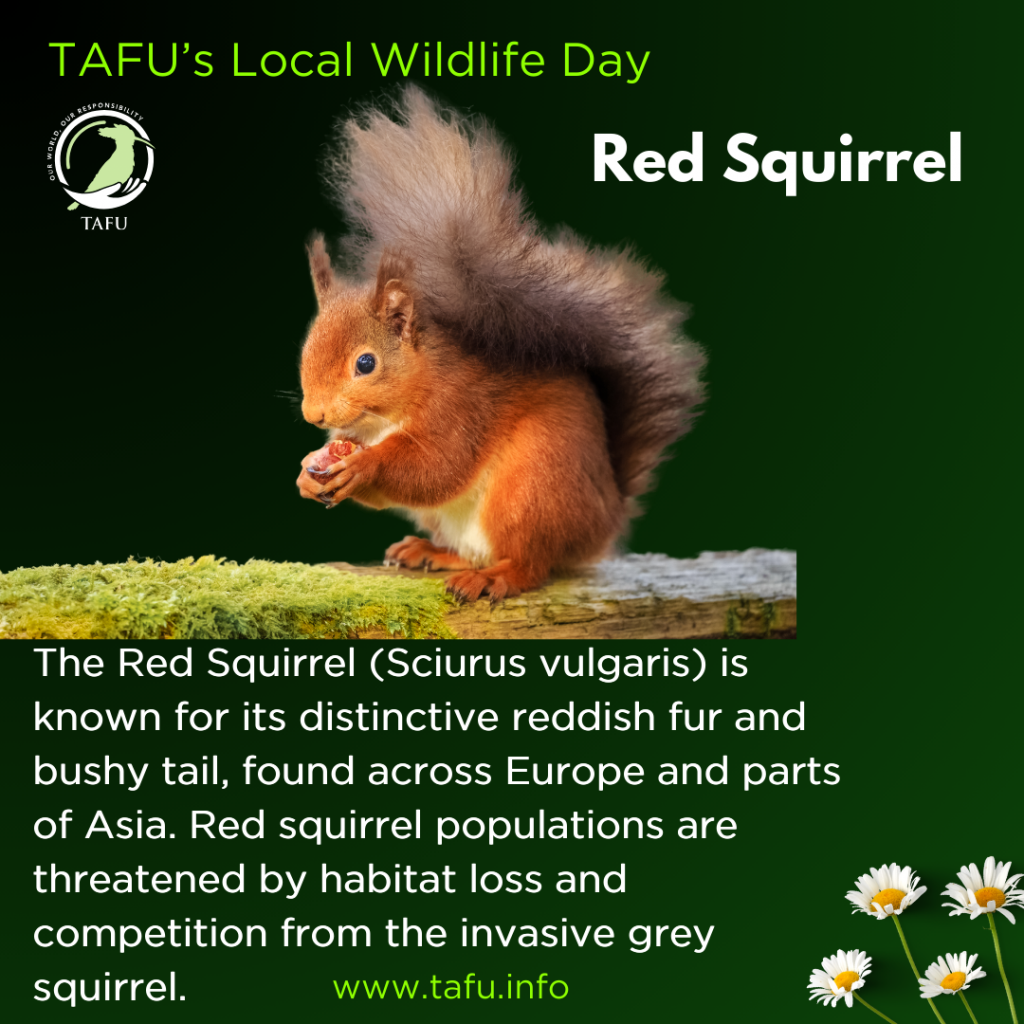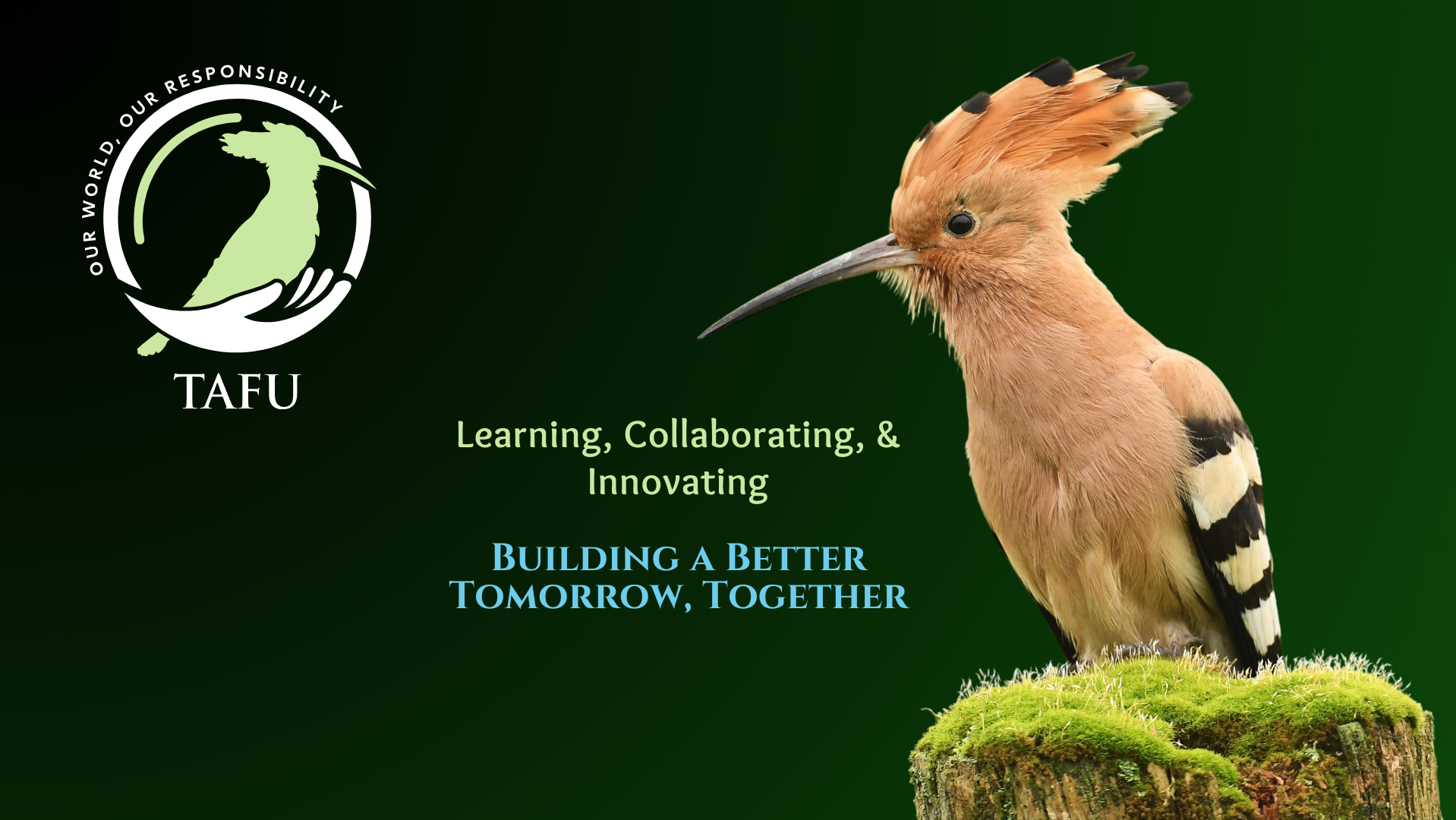Red Squirrel
As part of the countdown to TAFU’s Local Wildlife Day on the 11th of July – Species no. 41.
Stay tuned as tomorrow is the day!
The Red Squirrel (Sciurus vulgaris) is a charming and agile rodent, measuring about 18-20 cm in body length with a tail of about 17 cm. Its fur is typically a rich reddish-brown, though it can vary from black to blonde. The fur is thicker and darker in winter, with characteristic ear tufts that become more prominent during this season. The red squirrel’s bushy tail, used for balance and warmth.
Red squirrels are primarily found in coniferous and mixed woodlands, where they prefer areas with a plentiful supply of their main food sources: seeds, nuts, berries, and fungi. They are adept climbers, spending much of their time in trees, where they build spherical nests called dreys from twigs, leaves, and moss. These nests are often situated in the forks of branches or in tree hollows.
Their diet is diverse and changes with the seasons. In the spring and summer, they feed on buds, flowers, and fruits, while in the autumn, they gather and store seeds and nuts to sustain them through the winter. Red squirrels are known to hide food in multiple locations, relying on their excellent memory to retrieve these caches later.
Breeding doesn’t follow fixed rules, but generally occurs twice a year, with litters typically born in the spring and summer. After a gestation period of about 38 days, the female gives birth to 2-3 young, which are cared for solely by the mother. The young squirrels are weaned at around 8-10 weeks old and become independent shortly thereafter.
Red squirrel populations are under significant threat due to habitat loss and fragmentation, as well as competition from the invasive grey squirrel (Sciurus carolinensis), which carries the squirrelpox virus that is lethal to red squirrels. Grey squirrels also outcompete red squirrels for food and habitat, leading to declines in red squirrel numbers in many areas.
Conservation efforts focus on habitat protection and restoration, particularly the preservation and management of coniferous forests. Ensuring that native trees and shrubs thrive so that they can provide food and nesting sites can enhance local habitats and hence aid the red squirrels.

